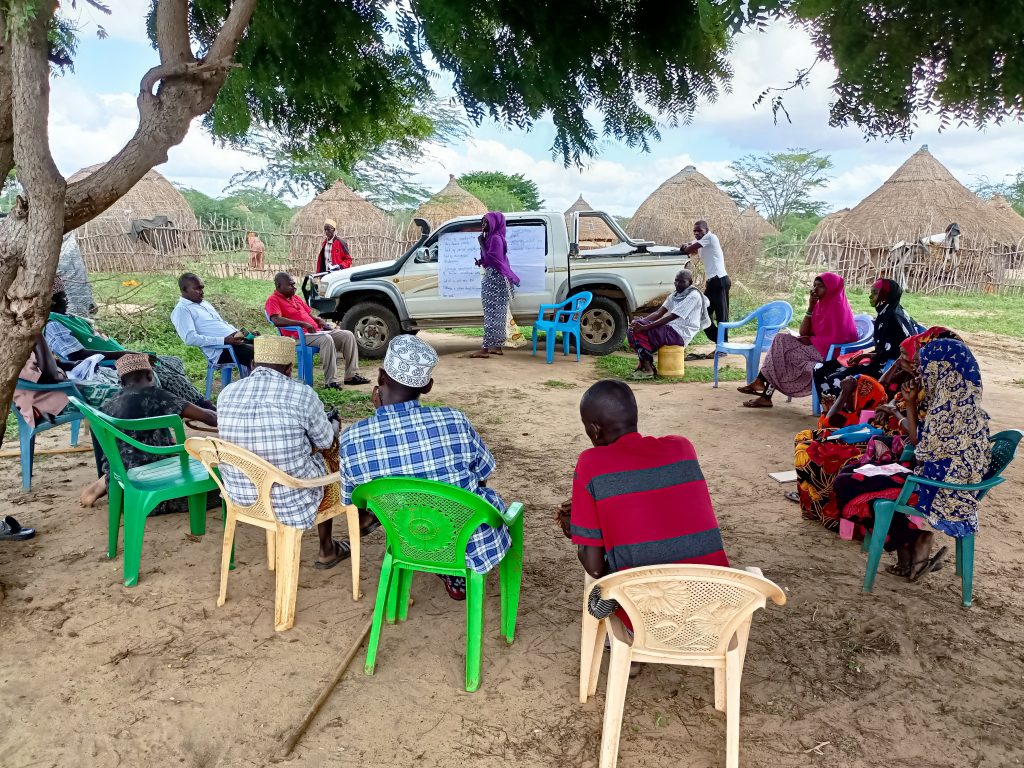The inclusion of communities in the consultation process has empowered people to change their mindset from short-term response requests to longer-term resilience thinking. Concern Worldwide is working with communities in Tana River County to help foster these mindset changes.
A county accustomed to short term interventions
Tana River County is situated in the lowest-lying part of Kenya, exposing it to both drought and floods. In some instances, the county has experienced drought subsequently followed by intense flooding, due to floodwater coming from the highland region and the Seven Forks Dams that are along the river. The communities in this area have become accustomed to receiving short-term interventions in response to these events from local and national government, local and international non-governmental organizations and civil society.
Concern Worldwide is implementing the Zurich Flood Resilience Alliance project in Tana River County. At the beginning of the project, most of the communities members interviewed said they felt that there was no permanent solution to floods and did very little to no resilience activities. Those that had ideas on how to increase resilience lacked resources and technical knowledge. Community members tried some practices such as having a raised place in the house to keep valuable items safe. However, this did not work as burglary increased in the community. Typically, when flooding occurred, people would wait for others to evacuate and try to take their personal belongings, thus impeding their safe escape.

Creating long-term resilience in Tana River County
During the initial stages of the Flood Resilience Measurement for Communities (FRMC) process, Concern Worldwide, in partnership with the County Government of Tana River, conducted community and stakeholder mappings to help build a better understanding of the communities and their needs. Community members expressed that the only solutions to fight the negative effects they face from floods was to move permanently to other locations, or to receive timely distributions of food and non-food items.
This thinking has changed over time and we have seen a complete community attitude shift from short-term resilience thinking to long-term resilience following the FRMC process.
Proposing new interventions
The baseline study identified that communities had a very low resilience score for financial capital, as communities often lose everything during a flooding event, making recovery very difficult. At the beginning of the project, communities were asking for interventions like cash transfers. This evolved during the action planning stage to proposals for interventions like irrigation schemes with solarized boreholes, in order to access irrigated water for their farms throughout the seasons.
This intervention would help create a dependable source of agricultural products allowing farmers to meet the demands of the market and increase their financial capacity, avoiding negative coping strategies (such as selling their assets for fast recovery) when big shocks like floods occur.
The communities also originally thought that their main solution to control the negative effects of flooding was the construction of dykes along the river. There was a complete attitude change during the community action development stage, where discussions revealed that construction of the dykes would affect their sources of livelihood. Farming and the keeping of livestock are dependent on direct access to the river water, and a dyke would interfere with this.

Longer-term resilience thinking
Prior to the FRMC process, the communities felt that they had no access to the County government and did not know how to advocate or lobby for resources. They were also not aware that they could have a role in the county budgeting process. However, through this process we saw the community allocating actions to the County and National government, and selecting advocacy champions to lobby and advocate on behalf of the community. These champions attended public participation forums for the County Integrated Development Plan (CIDP), which is a five-year plan prepared by every County government and lobbied for their priority actions to be included in the plan.
Most of the communities faced a big challenge in changing their mind-set from recovery to building resilience. The communities were used to organizations coming to them with projects that were based on the organizations’ priorities, rather than those of the communities. Engaging the communities in the FRMC process put them in charge of their own resilience planning, strengthening their capacity to develop action plans and advocate for their priorities with local government.
Supporting communities to empower themselves
It is often common practice for organisations to plan projects without involving the communities in the identification stage. This can lead to projects being unsustainable, as the community do not consider them a priority, or the intervention is too expensive for the community to maintain. Local people are well aware of the problems in their contexts, and often identify the solutions too. Involving the community in the project development stage creates a sense of ownership and makes sustainability easier. We must therefore ensure that we always support communities to empower themselves.
You can learn more about Concern’s work on empowering communities, specifically raising women’s voices in flood resilience, here.

Comments